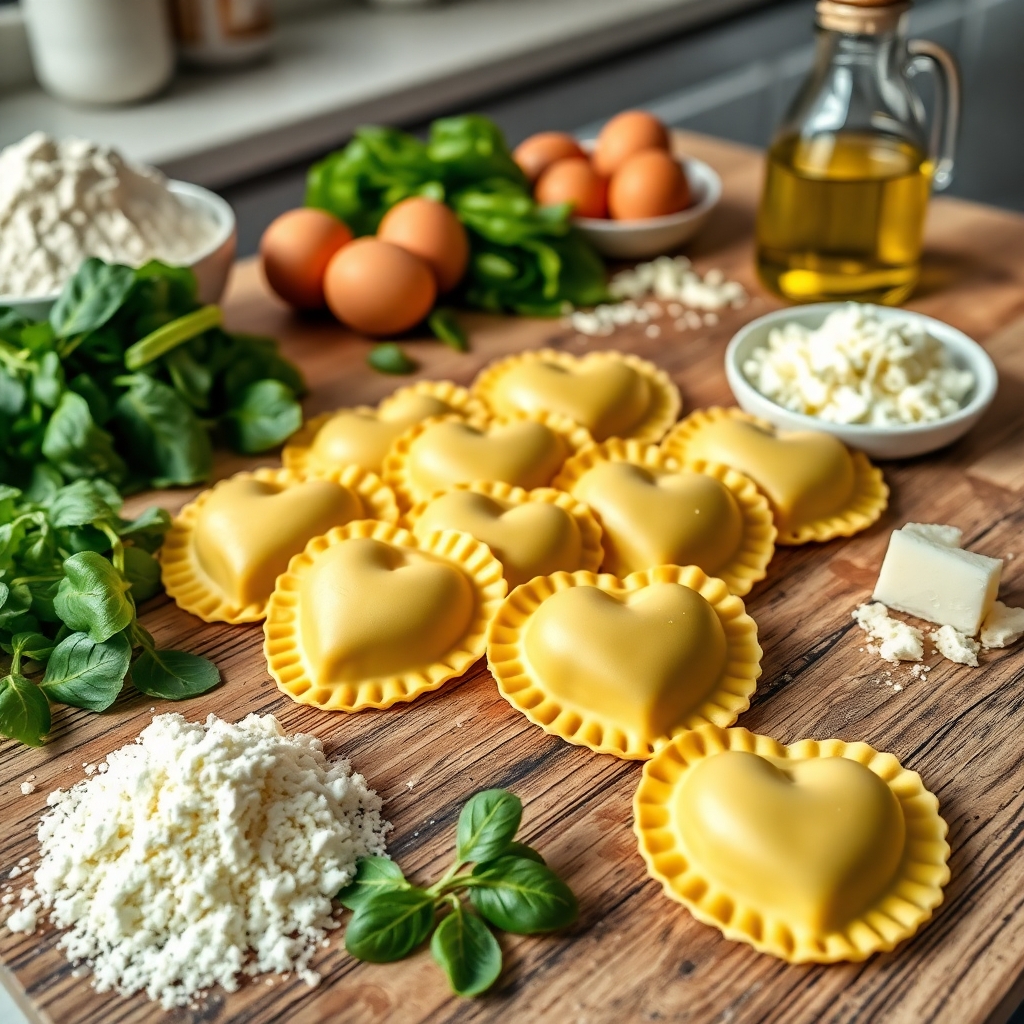Introduction
Ravioli, a beloved staple of Italian cuisine, offers a delightful combination of flavors and textures that can elevate any meal. This stuffed pasta is not only versatile but also allows for endless creativity in fillings and sauces. However, achieving the perfect ravioli requires a precise understanding of the preparation process. In this technical guide, we will delve into the intricacies of ravioli pasta preparation, covering everything from the dough composition to cooking techniques. Whether you are an aspiring chef or a home cook looking to enhance your culinary skills, this post will provide you with the knowledge needed to create impeccable ravioli.
Understanding Ravioli Dough Composition
The foundation of any great ravioli is its dough. Traditional Italian ravioli dough consists of just two primary ingredients: flour and eggs. However, the type of flour used can significantly impact the texture and flavor of the final product.
Flour Selection
- 00 Flour: This finely milled Italian flour is ideal for making pasta due to its high protein content and gluten strength, resulting in a smooth and elastic dough.
- Semolina Flour: Often combined with 00 flour, semolina adds firmness and enhances the structure of the ravioli.
- All-Purpose Flour: While not traditional, all-purpose flour can be used in a pinch; however, it may yield a less authentic texture.
Egg-to-Flour Ratio
A common ratio for egg-based ravioli dough is 1 large egg for every 100 grams of flour. This ratio can be adjusted depending on humidity levels or desired dough consistency. The eggs contribute richness and color while aiding in gluten development.
The Dough-Making Process
Creating ravioli dough involves several technical steps that ensure optimal texture and flavor:
- Mixing Ingredients: Start by placing the flour on a clean work surface or in a bowl, creating a well in the center for the eggs. Gradually incorporate the flour into the eggs using a fork until a shaggy mass forms.
- Kneading: Transfer the mixture onto a floured surface and knead it for about 10 minutes until smooth and elastic. This process develops gluten, which is crucial for maintaining shape during cooking.
- Resting: Wrap the kneaded dough in plastic wrap or cover it with a damp cloth to rest for at least 30 minutes at room temperature. Resting allows gluten fibers to relax, making it easier to roll out later.
Crafting Ravioli Fillings
The beauty of ravioli lies in its filling options—ranging from savory meats to fresh vegetables and cheeses. When preparing fillings, consider balance in flavors and textures:
- Classic Ricotta Filling: Combine fresh ricotta cheese with grated Parmesan, egg yolk, salt, pepper, and fresh herbs like basil or parsley.
- Meat Filling: Sauté ground meats (such as beef or pork) with aromatics like onions and garlic before mixing with breadcrumbs and herbs.
- Vegetarian Options: Roasted mushrooms blended with cream cheese or spinach mixed with feta create delightful vegetarian fillings.
Filling Techniques
To prevent overfilling (which can lead to bursting during cooking), use about one tablespoon of filling per raviolo. Make sure to leave enough space between each mound when laying out your filling on rolled-out pasta sheets.
Assembling Ravioli
The assembly process is critical in ensuring that each raviolo is properly sealed:
- Rolling Out Dough: Use a pasta machine or rolling pin to roll out thin sheets (about 1/16 inch thick). Dust with flour as needed to prevent sticking.
- Placing Fillings: Lay one sheet down on a floured surface and place spoonfuls of filling along one half of the sheet.
- Sealing: Fold the other half over the filling and press gently around each mound to expel air pockets before sealing edges firmly with your fingers or crimping with a fork.
- Cutting: Use a sharp knife or pasta cutter to trim around each raviolo, ensuring even shapes.

Cooking Ravioli
Once assembled, proper cooking techniques are essential for achieving al dente perfection:
- Boiling Water: Bring salted water to a rolling boil before gently adding ravioli.
- Cooking Time: Fresh ravioli typically cook within 3-5 minutes; frozen ones may take slightly longer (5-7 minutes). They are done when they float to the surface.
- Sauce Pairing: Serve your ravioli with complementary sauces such as brown butter sage sauce or marinara—both enhancing flavors without overpowering them.
Conclusion
Mastering ravioli preparation requires attention to detail at every stage—from selecting high-quality ingredients to perfecting cooking techniques. By following this technical guide, you can create delicious homemade ravioli that impresses family and friends alike.
Call to Action
Ready to embark on your ravioli-making journey? Gather your ingredients today and try crafting your own unique fillings! Share your creations with us in the comments below or tag us on social media; we’d love to see what you come up with!
Looking for a delightful and romantic dish to impress your loved ones? ❤️ Check out our recipe for Heart-Shaped Ravioli at Best Ever Recipes! Perfect for special occasions or a cozy dinner, this recipe combines beautiful presentation with incredible flavor.
👉 Read the full recipe here: Heart-Shaped Ravioli
Bring love to the table with this charming and delicious homemade pasta! 🍝
4o


1 thought on “Ravioli Pasta Preparation: A Technical Guide”
Comments are closed.